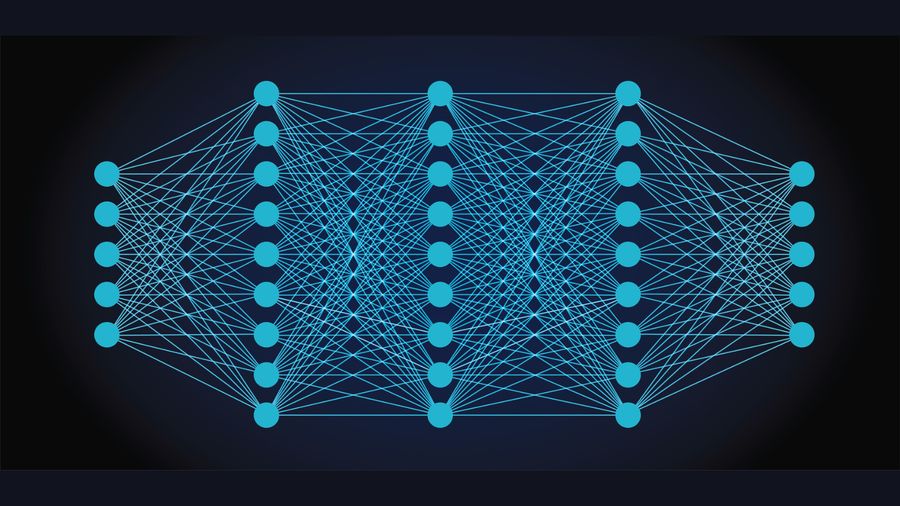🌟 Introduction to Neural Networks
In the last decade, neural networks have revolutionized the world of artificial intelligence (AI) and machine learning (ML). From voice assistants to image recognition, they power a wide range of smart applications. But how exactly do these systems learn? This article will walk you through the basics of training neural networks, perfect for beginners with little or no experience.

🤔 What is a Neural Network?
A neural network is a set of algorithms, modeled loosely after the human brain 🧠, that is designed to recognize patterns. It interprets sensory data through a kind of machine perception, labeling, or clustering of raw input.
At its core, a neural network consists of:
- Input layer 🔢: Where data enters the network.
- Hidden layers 🧩: Intermediate layers that process inputs.
- Output layer ✅: Final predictions or results.
Each connection between nodes has a weight, and each node has a bias — these parameters get adjusted during training.
🛠️ Tools You Need to Get Started
Before training your first neural network, you’ll need:
- Python 🐍: Most deep learning libraries use Python.
- TensorFlow or PyTorch 📚: Popular frameworks for building neural networks.
- Jupyter Notebook or Google Colab 💻: Great for writing and running code interactively.
- A basic understanding of NumPy, matplotlib, and pandas will help a lot.
🔍 Step-by-Step Guide to Training a Neural Network
Let’s break it down into clear, manageable steps:
1. 📊 Collect and Prepare Data
Garbage in, garbage out. Quality data is critical.
- Collect labeled data (e.g., images with labels).
- Split it into training, validation, and test datasets.
- Normalize the data for better performance (e.g., scaling values between 0 and 1).
python ------ from sklearn.model_selection import train_test_split from sklearn.preprocessing import StandardScaler
2. 🏗️ Build the Neural Network
Use a framework like TensorFlow or PyTorch.
python
------
from tensorflow.keras.models import Sequential
from tensorflow.keras.layers import Dense
model = Sequential([
Dense(128, activation='relu', input_shape=(input_dim,)),
Dense(64, activation='relu'),
Dense(1, activation='sigmoid') # For binary classification
])
3. ⚙️ Compile the Model
You’ll need to specify:
- Loss function (e.g.,
binary_crossentropyfor classification) - Optimizer (e.g.,
adam) - Metrics (e.g.,
accuracy)
python ------ model.compile(optimizer='adam', loss='binary_crossentropy', metrics=['accuracy'])
4. 🧠 Train the Model
Training adjusts the weights and biases using backpropagation and gradient descent.
python ------ history = model.fit(X_train, y_train, epochs=10, validation_data=(X_val, y_val))
5. 📈 Evaluate the Model
Use the test set to see how well the model performs.
python
------
test_loss, test_acc = model.evaluate(X_test, y_test)
print(f"Test Accuracy: {test_acc}")
6. 🧪 Tune Hyperparameters
Hyperparameters are settings like:
- Number of layers
- Number of neurons
- Learning rate
- Batch size
Use Grid Search or Random Search to find the best configuration.
🧮 How Does the Network Learn?
Neural networks learn using a technique called backpropagation:
- Forward Pass: Input data goes through the network to make predictions.
- Loss Calculation: The model compares its prediction with the actual value.
- Backward Pass: The error is propagated back through the network.
- Update Weights: Weights are adjusted to reduce the error.
This process repeats for each epoch (cycle through the dataset).
🛑 Common Pitfalls to Avoid
🚫 Overfitting: Model performs well on training data but poorly on unseen data.
✅ Solution: Use dropout layers, more data, or early stopping.
🚫 Underfitting: Model is too simple to learn the pattern.
✅ Solution: Add more layers or train longer.
🚫 Wrong Data Preprocessing: Inconsistent formats or scales.
✅ Solution: Always normalize or standardize data.
🚀 Best Practices for Beginners
- Start simple: Use fewer layers and neurons.
- Visualize training: Plot accuracy/loss graphs to see progress.
- Use callbacks: Save the best model, stop early if no improvement.
- Read documentation: Learn the ins and outs of your chosen framework.
🧠 Conclusion: Mastering the Art of Neural Networks
Training a neural network might seem daunting at first, but with the right mindset and tools, anyone can do it. The key is to experiment, iterate, and learn from mistakes. As you grow more confident, you’ll be able to tackle more complex problems, use advanced techniques, and even design your own architectures! 💡🚀
🔄 Quick Recap
StepAction1️⃣Collect & preprocess data2️⃣Build the model3️⃣Compile the model4️⃣Train the model5️⃣Evaluate and improve


